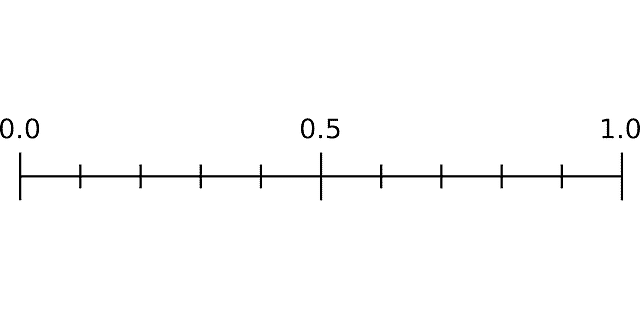
The group of values that takes a magnitude between two limits is called an interval.
Interval comes from the Latin intervallum and mentions the distance or space from one place to another or from one time to another. For example: “Between both meetings, I have a two-hour interval that I can take advantage of to go visit Uncle Ramón,” “I'm going to look at the doctor's schedule to see if he has any time to see you,” “On this route there is a service station at an interval of every fifty kilometers” , “Animals usually appear at intervals of a few meters” .
An interval can also be a set of values adopted by a magnitude between two limits . In this sense, we can speak of a frequency range or a temperature range .
Interval in music
In the field of music , interval is the difference in pitch between the sounds of two notes. Musical interval can be measured in degrees or pitches and expressed in a simple arithmetic proportion.
There are various types of musical intervals: tonal, modal, augmented, diminished, simple, compound, harmonic, melodic or complementary, among others. Each type depends on the characteristics of the sounds in question.

The difference in pitch that exists between the sounds of two notes is called the interval.
Classification according to type
On the one hand there are the tonal intervals, which can have only one value: first (also known as unison), fourth, fifth and octave. The modals , on the other hand, can be major or minor, and are the remaining ones: second, third, sixth and seventh. In both cases, the intervals can be increased and decreased (for example: taking the fourth from natural DO to natural FA, increasing it would reach sustained FA).
Another classification separates intervals into simple (those that do not extend more than one octave) and compounds (those that do exceed it). It is worth mentioning that compound intervals have the same properties as the corresponding simple ones if an octave is subtracted from them; For example, since a tenth is a third to the octave, it is considered tonal and can be major or minor, while a twelfth exceeds the octave by a fifth, so it must be treated as a tonal interval.
With respect to the interpretation of an interval, its execution on an instrument , it is considered melodic when the notes that compose it are played separately, successively, and harmonic if they must sound at the same time. The first type is clearly seen in an arpeggio and the second, in a chord in which all the sounds are produced simultaneously.
Finally, complementary intervals are those that form an octave when combined, as occurs with a third and a sixth; It is important to note that at first glance the sum equals nine, because the first degree of the sixth is the last of the third, which gives us a "double" note (a third from C to E plus a sixth from E to C). .
Interval in the theater
In theater , interval is a period of dead time in the middle of the development of a work . These periods usually appear in works of very long duration, so that viewers can take advantage of the break and go to the bathroom, buy some candy, etc.: “I hope the interval arrives soon: I am very thirsty and I want to buy a soft drink.” “The intensity of the work drops after the interval,” “I got bored during the interval, which lasted more than half an hour.”
The intervals of a play also serve to assimilate the story , to reflect on the experiences lived in the last act or acts and try to anticipate what is to come. For many people, these pauses benefit the impact of the performances, since they renew them at the beginning of each act, generating a series of sensations in the audience that keep them immersed in the fiction.
